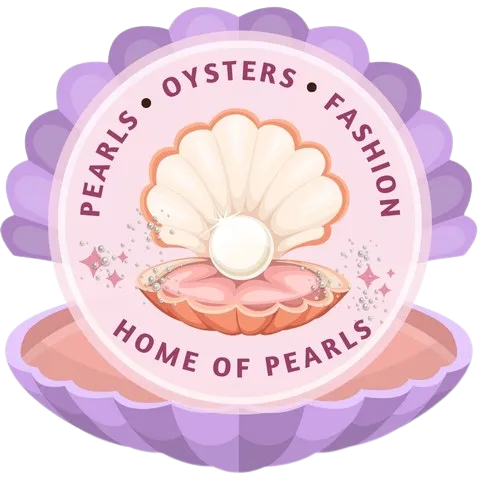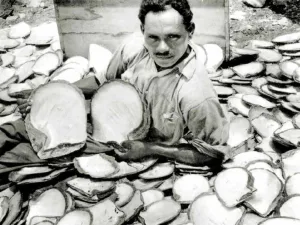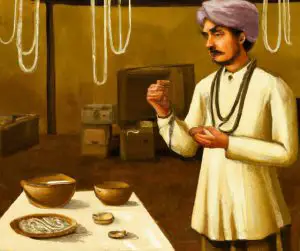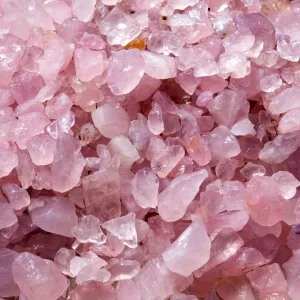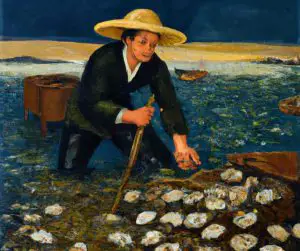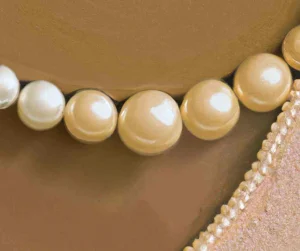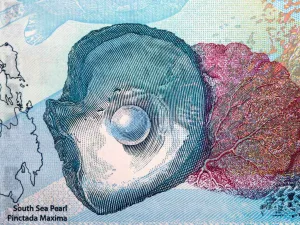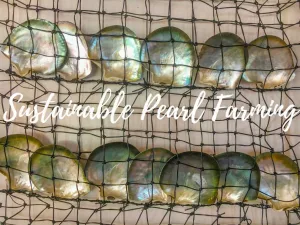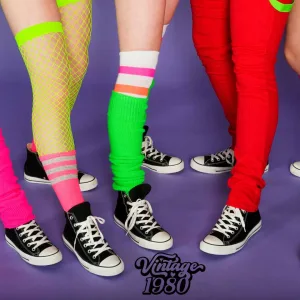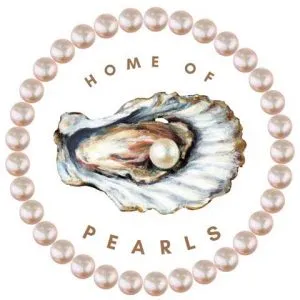Conch pearls are rare gemstones that are prized for their beauty and value. The coveted conch pearl has been sought after by collectors, jewelers, and investors since its discovery in the Caribbean Sea more than 500 years ago.
Conch pearls, also known as “queen conch pearls” or “pink pearls,” are rare and highly sought-after gems. They come from the Caribbean Queen Conch (Strombus gigas), a gastropod mollusk found in shallow waters along the coasts of the Caribbean Sea, the Gulf of Mexico, and the Florida Keys.
The pearl itself is formed inside the shell of this mollusk when an irritant, such as a tiny parasite or grain of sand, becomes trapped between its mantle and shell.
Table of Contents
- So what is a Conch Pearl?
- How are Conch Pearls different from other natural pearls
- What is the History of Conch Pearls?
- How are conch pearls produced?
- Gemological features of a Conch Pearl
- Uses of Conch Pearls of Queen Conch Shells
- The value of a conch pearl
- Takeaway
- References
So what is a Conch Pearl?
Pink Pearl (Conch Pearl) found in Strombus gigas (Queen Conch) have a distinctive ‘flame pattern’ resembling watered silk. These unique gems range in color from light pink to deep red, making them highly collectible.
Their rarity is what makes them so desirable; fewer than one percent of all conch shells contain a pearl. Conch pearls vary in size and shape, but they typically measure around 0.5-2 centimeters in diameter. The color of the pearl actually reflects the interior color of the shell, with the pink color being the most sort after hue.
Few of these pearls are found in nature, and even fewer still are of a viable commercial grade. About 1 in 10,000 Queen Chonchs produce a pearl. Of this number, only 1 in 10 are of appreciable gem quality. For this reason, a fine, good-sized, and well-shaped Conch pearl is likely to fetch a handsome price tag.
Conch pearls are unique non-nacreous, usually pink, and ovoid-shaped concretions from univalve mollusks known as Strombus gigas. Conch pearls are also known as ‘Pink Pearls’.
What are conch pearls?
How are Conch Pearls different from other natural pearls
Conch pearls are of non-nacreous origin, while pink-hued natural pearls are of nacreous origin. Because Conch Pearls are non-nacreous, they are not considered to be true pearls.
Unlike other precious gems, conch pearls are not graded using the same standards as diamonds or other gemstones. Instead, conch pearls are judged on their individual beauty and quality – factors such as color, luster, texture, and clarity are taken into consideration when evaluating them for sale.
The rarity of these gems makes them highly valuable; a single conch pearl can easily fetch thousands of dollars at auction.

What is the History of Conch Pearls?
The conch shell of Strobus gigas was used by the Incas of South America in religious ceremonies. They perceived the Conch shell as a mouthpiece of the gods.
Perhaps, by placing the empty shell of Strobus gigas to their ears, the hurling sound of the wind passing through the shell created variable sounds that were seen as mystical by the ancient Inca.
The first formal documentation of conch pearls was in a manuscript by Henry Philip Hope titled “Catalogue of the Collection of Pearls and Precious Stones,” published in 1839.
Conch pearls were incorporated into the jewelry of the nobility class during the reign of Queen Victoria (1837-1901)
How are conch pearls produced?
As previously mentioned, these represent non-nacreous concretions present in the shell of the mollusk, Strobus gigas.
Since there is no man-made culturing process for these gems, they continue to be rare and highly-priced if they are of high quality.
Strombus gigas (a type of mollusk) has a conch shell and is commonly found in the West Indies, Bahamas, and the Florida coasts. These mollusks may measure up to 12 inches in length and can weigh anywhere from 5 to 60 pounds.
What is the queen conch?
Gemological features of a Conch Pearl
| Physical Characteristic | Features |
| Size | Range typically from 0.5-2cm in diameter. |
| Shape | Wide variety of shapes (symmetrical to baroque shaped) |
| Color | Pink (the commonest and most sought-after color), yellow, brown, and white |
| Color Stability | They, unfortunately, fade on consistent exposure to direct sunlight |
| Toughness and hardiness | Mohs scale 4-6. This is much harder than it is for nacre found in true natural pearls. Mohs scale : Calcite (3) and Aragonite (4) |
Uses of Conch Pearls of Queen Conch Shells
Due to their uniqueness and rarity, conch pearls have been treasured by collectors for centuries and often appear in jewelry from all over the world.
They are particularly popular and are often set as pendants or worn as rings. They also make great gifts and can be found in a variety of forms, from earrings and bracelets to brooches.
Each conch pearl is so unique that finding matching conch pearls for uniform necklace strands and earring sets are highly unlikely.
The pink-hued shell of the Queen conch has many uses – it makes an acceptable curio ornament or even base for the manufacture of porcelain.
The value of a conch pearl
The value of a conch pearl depends heavily on its color and shape.
- Color is the most important factor in determining the value of a conch pearl because it indicates how rare the pearl is. Pink is the most valuable color.
- The shape is also important because it reflects whether or not your pearl has formed correctly. In this case, you can expect to pay more if your pearl has an unusual shape (such as oval) than if it’s fairly round like most others are.
- Surface quality also affects value: higher-quality surfaces will add to its overall beauty and make it appear more valuable than other pearls that are less smooth or have areas where they’ve been chipped or scratched away.
Takeaway
• Conch “pearls” are rare and beautiful gems that have a still-unsolved mystery to their formation.
• They are difficult to culture or imitate, making them a true natural gem.
• Their hardness and toughness make them easy to mount in jewelry.
• After years of relative obscurity, they seem to return back into fashion because more are available (although they’re still quite rare).
References
Fritsch, E., & Misiorowski, E.B. (1987). The History and Gemology of Queen Conch “Pearls”. Gems & Gemology, 23, 208-221.
